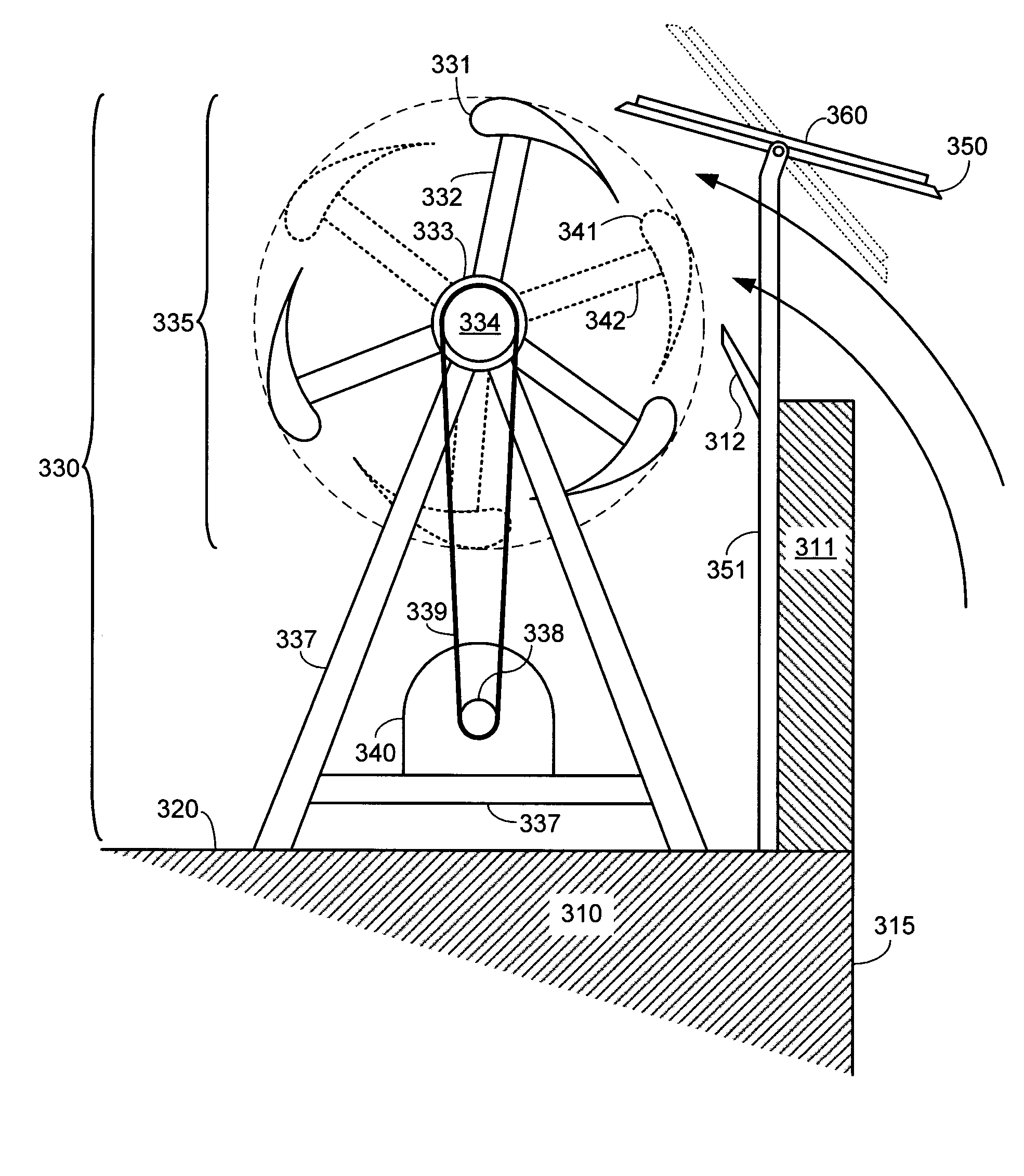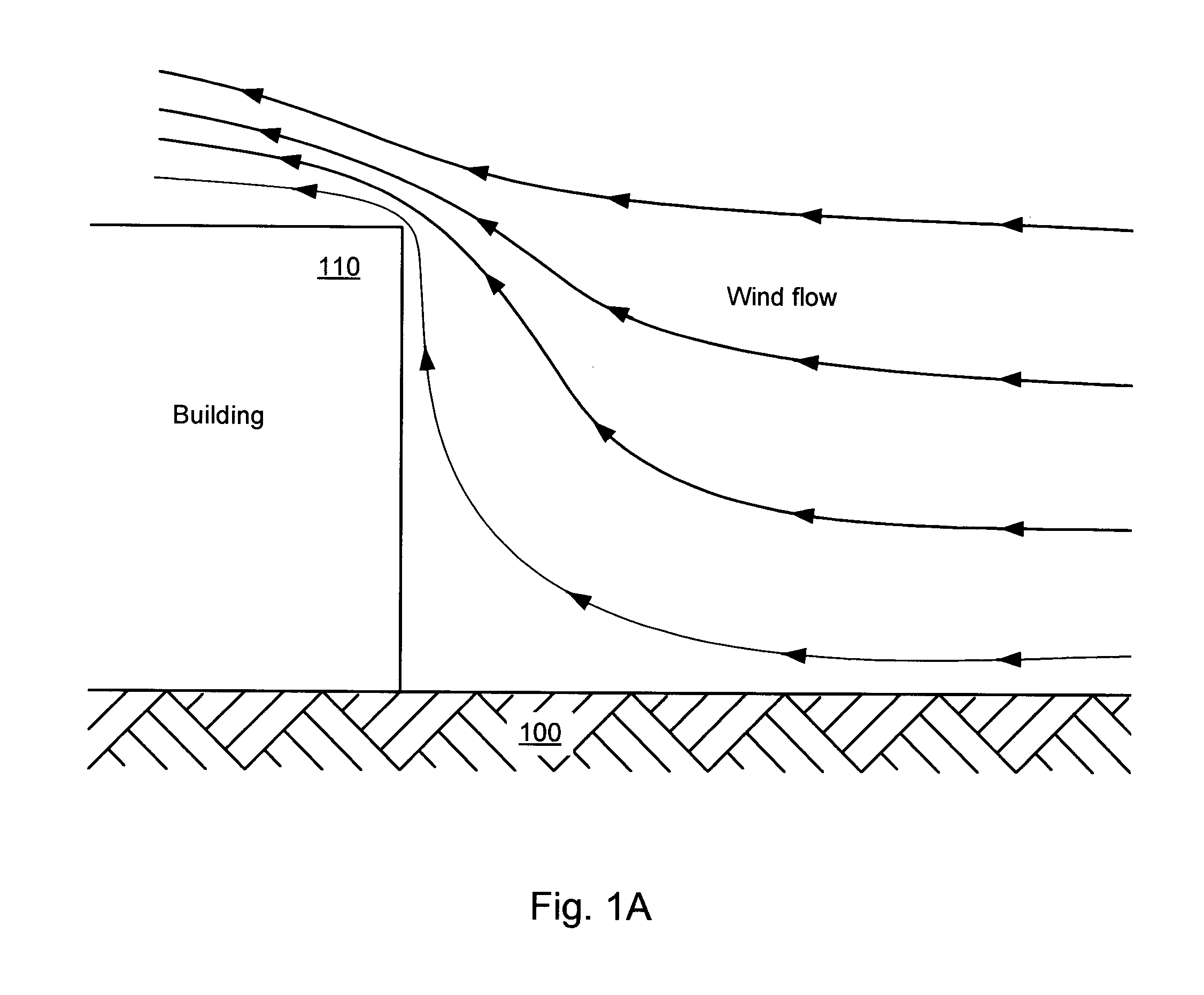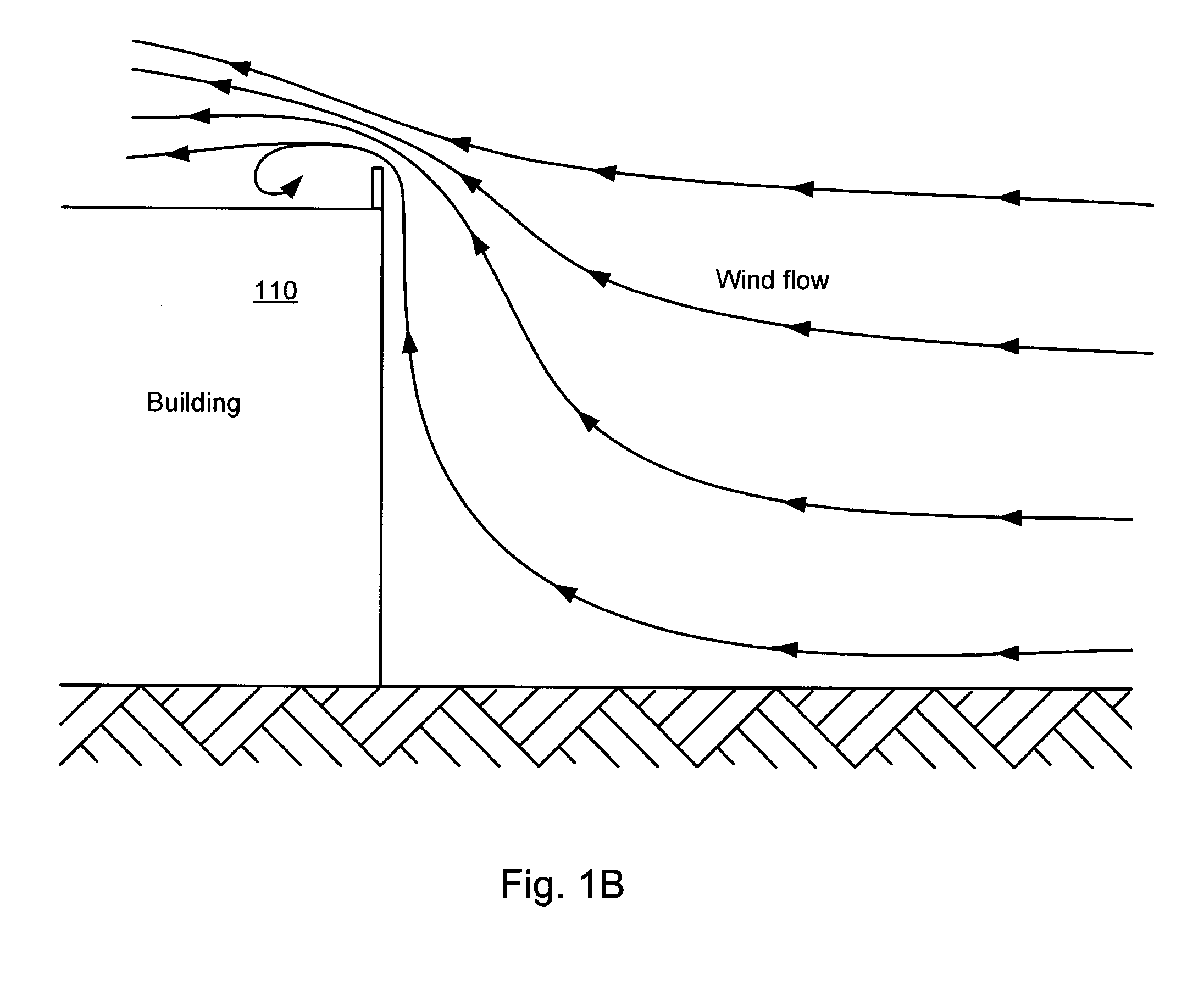Wind Turbine System for Buildings
a technology for wind turbines and buildings, applied in the direction of electric generator control, renewable energy generation, greenhouse gas reduction, etc., can solve the problems of increasing the wear of bearings, the turbine turns relatively slowly, and never progressed beyond the research stage, so as to enhance or spoil the wind flow to the wind turbine. , to achieve the effect of increasing efficiency
- Summary
- Abstract
- Description
- Claims
- Application Information
AI Technical Summary
Benefits of technology
Problems solved by technology
Method used
Image
Examples
Embodiment Construction
[0023] One or more embodiments of the invention are described below. It should be noted that these and any other embodiments described below are exemplary and are intended to be illustrative of the invention rather than limiting.
[0024] As described herein, various embodiments of the invention comprise systems and methods for capturing the energy of wind currents by placing wind-driven turbines at one or more edges or the perimeter of a building's roof, where the wind currents are concentrated by deflection of the wind off the vertical faces of the building.
[0025] In one embodiment, an energy generation system makes use of a cylindrical turbine having multiple blades that are parallel to the axis (axis of rotation) of the turbine. The turbine is positioned on the roof of a building, near the edge of the roof on its perimeter. The turbine is oriented horizontally, with its axis parallel to the edge of the roof. In this embodiment, a parapet wall extends upward from the edge of the r...
PUM
 Login to View More
Login to View More Abstract
Description
Claims
Application Information
 Login to View More
Login to View More - R&D
- Intellectual Property
- Life Sciences
- Materials
- Tech Scout
- Unparalleled Data Quality
- Higher Quality Content
- 60% Fewer Hallucinations
Browse by: Latest US Patents, China's latest patents, Technical Efficacy Thesaurus, Application Domain, Technology Topic, Popular Technical Reports.
© 2025 PatSnap. All rights reserved.Legal|Privacy policy|Modern Slavery Act Transparency Statement|Sitemap|About US| Contact US: help@patsnap.com



